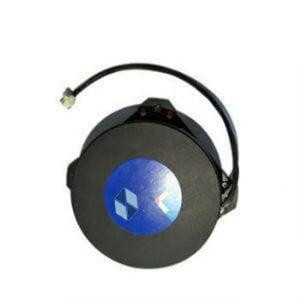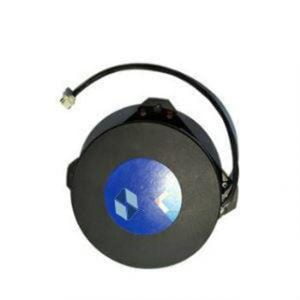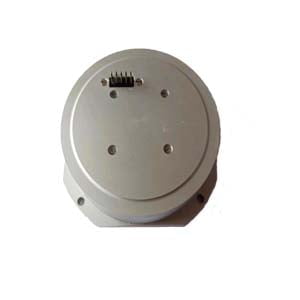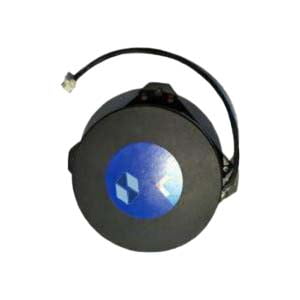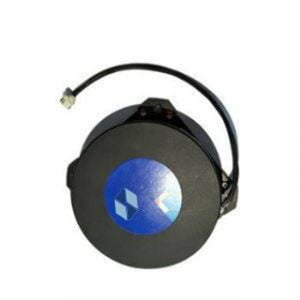Due to the size of the currently widely used fiber optic gyroscopes, it has restricted the development of some applications with limited space, such as small unmanned aerial vehicles (UAV), small autonomous underwater vehicles (AUV) and tactical missiles, etc. for their own navigation and positioning modules. With the further development of technology, miniaturized, medium-precision, and low-cost tactical-grade fiber optic gyroscopes will have immeasurable application prospects.
1.Basic principles of FOG technology
FOG is based on the Sagnac effect. In a closed loop composed of an optical fiber ring, two beams of light waves propagate in opposite directions from one of the points. When they circle around the optical fiber ring and return to that point, the phases of the two light beams change. During the rotation of the carrier, Sagnac The phase shift causes the light wave interference fringes to move slightly, and the light propagating in opposite directions travels different distances. The resulting optical path difference is proportional to the angular velocity of rotation. The angular velocity of rotation can therefore be obtained from the optical path difference.
Interferometric FOG (IFOG) has a reciprocal structure, which requires the two beams of light to propagate in the opposite direction to have the same transmission characteristics, the additional displacement is the same, and has a good "common mode suppression" effect, which can eliminate various A parasitic effect, the accuracy is much higher than other interferometers.
In addition to IFOG, there are also resonant FOG (resonant FOG, RFOG), stimulated Brillouin scattering FOG (stimulated Brillouin scattering FOG, BFOG), etc. They work in different ways. RFOG uses a ring resonator to enhance the Sagnac effect and recirculate propagation to improve measurement accuracy. The nucleation sensitive device of RFOG is a fiber ring resonator, and its sensitivity is related to the area enclosed by the fiber resonator. related, regardless of fiber length. The working mechanism of BFOG is to realize the directional gain effect, detect the resonant frequency and obtain the angular velocity.
2.Key technologies of small FOG
The key technologies of small FOG can be divided into miniaturization of optical path structure, miniaturization of circuit structure, multiplexing, etc.
The optical path part of FOG consists of three parts: active part, passive part and sensitive optical fiber coil. Simplifying the structure, reducing the size of the optical path components, using thin-diameter optical fibers, and reducing the bending radius of the pigtail during use can achieve miniaturization. Optical path miniaturization technology and optical path integration are closely combined, and devices such as light sources, couplers, Y waveguides, beam splitters, and detectors can be integrated. The double Y-shaped passive integrated optical circuit can also shorten the length of the device. In order to reduce the size of FOG, the new FOG dedicated PAM module integrates photodetectors and preamplifier circuits. The high integration of these devices reduces the size and space of FOG and also improves the reliability of the entire system. In addition, the miniaturization and lightweight of the optical path part of FOG must have a sensitive coil with a very small outer diameter. If the miniaturized FOG uses a small-diameter optical fiber, its outer diameter can reach 40μm. Single-mode fiber is less affected by the coating and less sensitive to bending. The use of three-axis light sources to share the FOG inertial navigation combination can also further realize the miniaturization and lightweight of the optical path part of the FOG, and reduce the overall volume of the system. The all-digital processing technology of today's production FOG allows the gyro signal in the three-axis inertial measurement device to be effectively multiplied.
Most of the FOG circuit miniaturization technology uses all-digital closed-loop technology, which can be completed on programmable integrated circuits, including preamplifiers, filters, converters, programmable chips, etc. Improvements in signal modulation and demodulation can reduce system size and improve reliability. Digital processing uses gate array FPGA for large-scale integration, and peripheral circuits can also be further miniaturized through secondary integration.
FOG multiplexing technology means that three orthogonal fiber optic gyroscopes need to be installed to process speed and position information in different directions and settle navigation information. Multiplexing of multiple processing circuits can effectively reduce volume, quality, cost and power consumption. In multiplexing circuits, there is a time delay problem, and the three signals can be separated through appropriate demodulation to avoid cross-coupling. Most three-axis FOGs share light sources and drivers to achieve miniaturization.
3.Conclusion
This article mainly introduces the miniaturization design technology of fiber optic gyroscope. The development of small FOG technology is a major requirement to meet customer needs and an inevitable trend to achieve miniaturization, low cost and mass production of FOG. If you are interested in our small fiber optic gyroscope, you can check out ER-FOG-50, ER-FOG-60.
More Technical Questions
1.Application of fiber optic gyroscope in aviation field
2.Processing and Analysis of Random Drift Error Based on Fiber Optic Gyroscope
3.Analysis of Temperature Drift Compensation Method for Fiber Optic Gyroscope
4.Application of Fiber Optic Gyroscope in oil drilling field
5.Analyze the Temperature Effect Mechanism of Fiber Optic Gyroscope
6.Application of fiber optic gyro in underground pipeline
Products in Article
